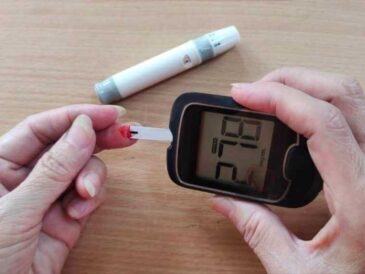What if “365 Days Healthy” said that lowering your A1C to 5.5% isn’t a pipe dream but entirely achievable for most people with diabetes, even if you’ve been struggling for years?
Today, “365 Days Healthy” will give you the complete roadmap, no hype, no fluff. It’s a clear, actionable plan that gets to the root cause of high blood sugar, not just the symptoms. “365 Days Healthy” will also show you why most people fail, and exactly how you can avoid those common mistakes.
Let’s start with the basics, your A1C reflects your average blood sugar over the last 2 to 3 months. To reach an A1C of 5.5%, you need to maintain an average glucose level of 110 mg/dL. That’s not just “under control”, that’s true metabolic health.
The 1:2:3 rule for fast results
This simple structure can start lowering your A1C right away:
- 1 dietary focus at a time, just one macronutrient change instead of trying to change everything at once.
- 2 meals per day (maximum).
- 3 hours with no food before bed.
This framework alone can lower your A1C by 0.5% to 1% in just 8 to 12 weeks, and the improvements will continue from there.
Type 2 diabetes is not just a “sugar” problem. It’s a dietary, environmental, toxic, and inflammatory disease. Your body is overloaded with glucose, and it’s spilling into the bloodstream, like water overflowing from an already full barrel. The solution isn’t more medication to push glucose into full cells, the solution is to stop overfilling the barrel in the first place.
A key insight: There are no essential carbohydrates, your body needs essential amino acids from protein, your body needs essential fatty acids from healthy fats. But there is no such thing as an essential carbohydrate. Every carbohydrate you eat becomes glucose in your bloodstream.
If your blood sugar is high, you need to eat more foods that don’t raise it. Designs your meals around this ratio:
- 20% healthy fats: avocado, olive oil, nuts, seeds
- 50% non-starchy vegetables: broccoli, spinach, asparagus, cauliflower
- 30% high-quality protein: wild-caught fish, grass-fed meats, pasture-raised eggs.
These foods spike blood sugar dramatically and must be eliminated:
- All added sugars and sweetened drinks.
- White carbs: bread, rice, pasta, potatoes.
- Processed foods and snacks.
- Fruit juices and most fruits (with the exception of small amounts of berries or the occasional apple).
Meal timing and food order.
Did you know that eating foods in the right order can reduce your post-meal blood sugar spikes by 30–40%?
Here’s the ideal food sequence: Start with vegetables, dressed with olive oil and vinegar, then eat your protein and fats. If you must eat carbohydrates, eat them last, or better yet, skip them entirely.
The Vinegar Hack, before each meal, take 1 tablespoon of apple cider vinegar mixed in water. The acetic acid slows down glucose absorption and can reduce post-meal spikes by up to 33%.
Intermittent fasting for A1C control. This isn’t folk wisdom, it’s backed by science. Fasting helps regulate insulin and gives your pancreas time to rest.
Start simple: Begin with 12 hours of fasting, Progress to 16:8 (16 hours fasting, 8 hours eating). Move toward 18:6 and eventually One Meal A Day if comfortable. This helps your body become insulin sensitive again.
The right kind of exercise (Especially for Seniors)
Exercise is key, but not all forms are equally effective for blood sugar control. And age should never be a barrier.
Muscle is your body’s largest glucose storage tank. Building muscle improves insulin sensitivity.
Chair-based resistance training (Ideal for 60+), these exercises are gentle but effective:
- Chair push-ups: 8 to 10 reps.
- Seated leg extensions: 10 to 15 reps.
- Seated arm circles with light weights: 15 to 20 reps.
- Do these 3 times a week for just 15–20 minutes each session.
In Summary
Lowering your A1C to 5.5% or even 5.0% is absolutely achievable, no matter where you’re starting.You just need: A clear plan rooted in science, simple but powerful strategies, consistency and patience.
You don’t need more medication, you need the right tools. And now you have them.
Learn more about intermittent fasting programs.


